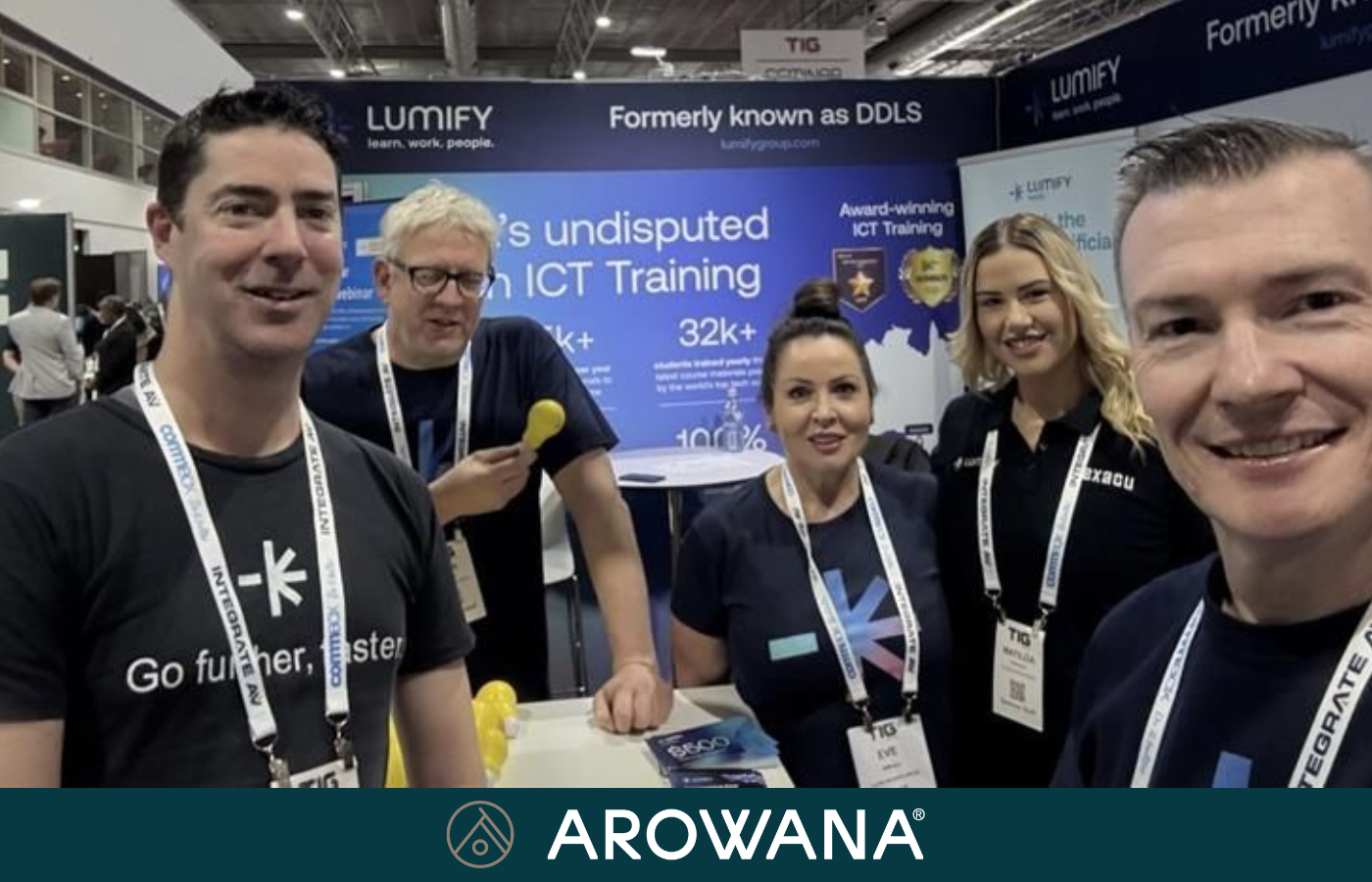
The Lumify Group team has joined this year's Tech in Gov 2025 Expo with the goal of highlighting the company's programs on artificial intelligence, cybersecurity, end-user apps, and more.
Participants of the event were able to meet experts in the field, including Jeremy Daly, CISM, Leif Pedersen, Matilda Robinson, Eve O'Meara, and John Rutherford. They also got to bring home some Lumify swags such as torches, stress bulbs, and training vouchers.
Lumify CEO Jon Lang also delivered his talk on digital skilling in the public sector.
For more news and insights, stay tuned to the Arowana website.
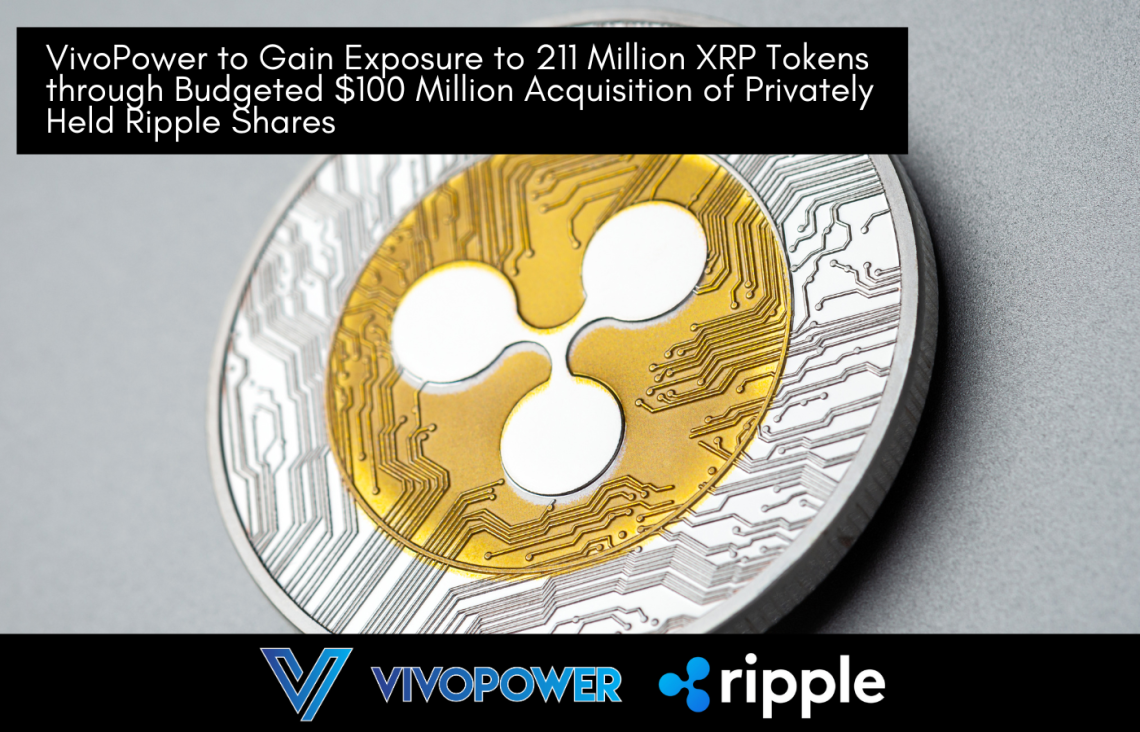
Backed by investors including Andreessen Horowitz and Google Ventures, Ripple Labs (Ripple) holds 41 billion XRP tokens, representing approximately 41% of all XRP tokens on issue
VivoPower will become the first and only U.S.-listed company to provide exposure to Ripple
For $10 million of Ripple shares acquired, an estimated $5.15 of value per share could accrete to VivoPower
VivoPower today announced it is acquiring Ripple Labs (Ripple) shares, as part of a strategic enhancement to its XRP-focused digital asset treasury strategy. Following a two-month period of due diligence, VivoPower has budgeted to purchase an initial $100 million of privately held Ripple shares. This encompasses definitive agreements directly with current Ripple shareholders, which are subject to final approval from Ripple’s executive management. Aside from these transactions, VivoPower will continue to directly acquire and hold XRP tokens. Based on current market prices (which are subject to volatility and material change), a purchase of $100 million of Ripple shares translates into an underlying 211 million XRP token exposure with a current market value of $696 million.
Ripple minted a fixed 100 billion XRP tokens at inception and given there have been approximately 14 million XRP tokens burnt to date, the network is mildly deflationary. Ripple continues to hold 41 billion XRP tokens, primarily in escrow. In addition, Ripple has a number of operating businesses, including RLUSD, its stablecoin; the digital assets prime broker Hidden Road, MetaCo and the Standard Custody and Trust Company, as well as the recently acquired stablecoin payment platform company, Rail.
VivoPower will become the first and only publicly listed company in the United States that provides shareholders with exposure to Ripple shares as well as XRP tokens. On a weighted average basis, this dual-pronged strategy is intended to deliver an acquisition cost per XRP token that represents an exceptionally favorable discount to the market price of XRP. For $10 million of Ripple shares acquired, an estimated $5.15 per share of value accretion could accrue to VivoPower shareholders (this is based on factors including the current market prices of VVPR, XRP and weighted average purchase price of Ripple shares, all of which are subject to volatility and change).
Importantly, VivoPower will have a full and direct legal title of Ripple shares purchased and be recorded as a shareholder directly on Ripple’s cap table. VivoPower will not purchase any Ripple shares that are held in special-purpose vehicle structures (with embedded fees and costs). An independent auditor will conduct quarterly reviews of VivoPower’s Ripple shareholdings.
Kevin Chin, Executive Chairman and CEO of VivoPower, commented: “The opportunity to acquire Ripple shares and materially average down the acquisition price per XRP is in line with our objective of building a sustainable long-term treasury model that translates into substantial potential upside for shareholders. Our portfolio construction strategy is to buy a combination of Ripple shares and XRP tokens. This will allow us to optimize for yield maximization while also minimizing the weighted average cost of XRP acquired.”
Adam Traidman, former Ripple board member and Chairman of VivoPower’s Advisory Board, commented: “By purchasing Ripple shares, not only will VivoPower acquire XRP at valuations up to an 86% discount versus buying XRP outright on the market, we will also gain a stake in Ripple’s RLUSD stablecoin and its other business units, including Hidden Road, Rail and Metaco.”
To support the execution and governance of its treasury strategy, VivoPower has engaged leading digital asset custodian and private market securities infrastructure providers, including BitGo and Nasdaq Private Market, LLC, the preferred partner of Ripple for transacting its shares. Securities-related services are offered through NPM Securities, LLC, a member of FINRA and SIPC. Nasdaq Private Market, LLC is operationally independent from Nasdaq Stock Market LLC.
To read our full press release, and to keep up with all of VivoPower’s releases, visit our Press Releases page.
Contact
Shareholder Enquiries
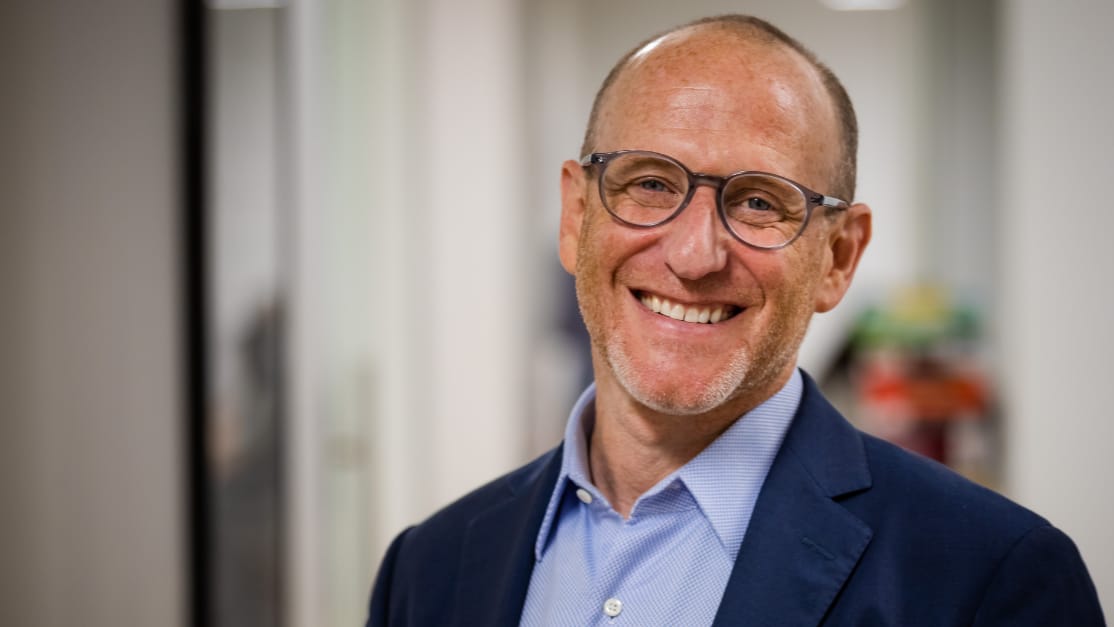
He knew how the system worked—and more importantly, where it failed. That rare blend of insider expertise and outsider empathy positioned Andrew as one of the most influential architects of the sustainable business movement. His work didn’t just challenge capitalism. It redesigned it.
On June 22, 2025, Andrew passed away after a two-year battle with cancer. Yet the movement he helped build—a global framework for stakeholder capitalism—is stronger than ever, powered by the scaffolding of ideas and institutions he put in place. His vision continues to shape thousands of companies across six continents.
Andrew’s pivot from finance to social innovation wasn’t born of impulse. It was a methodical reimagination. Together with friends Jay Coen Gilbert and Bart Houlahan, he launched B Lab, a nonprofit that would go on to formalize a new kind of enterprise: the Certified B Corporation.
The idea was bold—businesses governed not solely by shareholder interests, but by accountability to workers, customers, communities, and the environment. Under Kassoy’s leadership, B Lab grew into a global movement:
His legacy is measured not in metrics alone, but in the moral recalibration he sparked.
Andrew understood that real change needed more than good intentions—it required new laws, metrics, and institutions. He wasn’t content with surface-level corporate social responsibility. He fought for deep governance reform, shifting fiduciary norms and legal obligations toward stakeholders.
His work helped redefine:
By rooting stakeholder capitalism in enforceable structures, Andrew gave it teeth. He transformed ideals into operating systems.
“Care must be the operating system of business,” Andrew declared in his final message with B Lab co-founders. It was more than a phrase—it was his manifesto.
He believed that capitalism’s true potential could only be realized when companies placed people and planet on equal footing with profit. For Andrew, stakeholder capitalism wasn’t about compromise—it was about correction. It was business in service of human flourishing.
He didn’t seek to abolish capitalism. He sought to elevate it—to make it accountable, inclusive, and regenerative.
Even in his final chapter, Andrew remained focused on infrastructure and legacy:
His final days were marked not by retreat, but by resolve.
Andrew Kassoy didn’t just build a certification. He built a culture.
His ideas ripple across:
Every B Corp, every CEO who chooses purpose, every investor who demands accountability owes something to Kassoy’s blueprint.
His impact isn’t just economic—it’s emotional. He invited business to care. And in doing so, he changed its course.
As stakeholder capitalism enters a new chapter, the foundations laid by Andrew Kassoy offer both guidance and grit. His work reminds us that transformation requires not just vision, but infrastructure—metrics, legal frameworks, and moral courage.
And most of all, care.
Andrew gave the business world a gift: the audacity to lead with heart.
For more news and insights, stay tuned to the Arowana website.
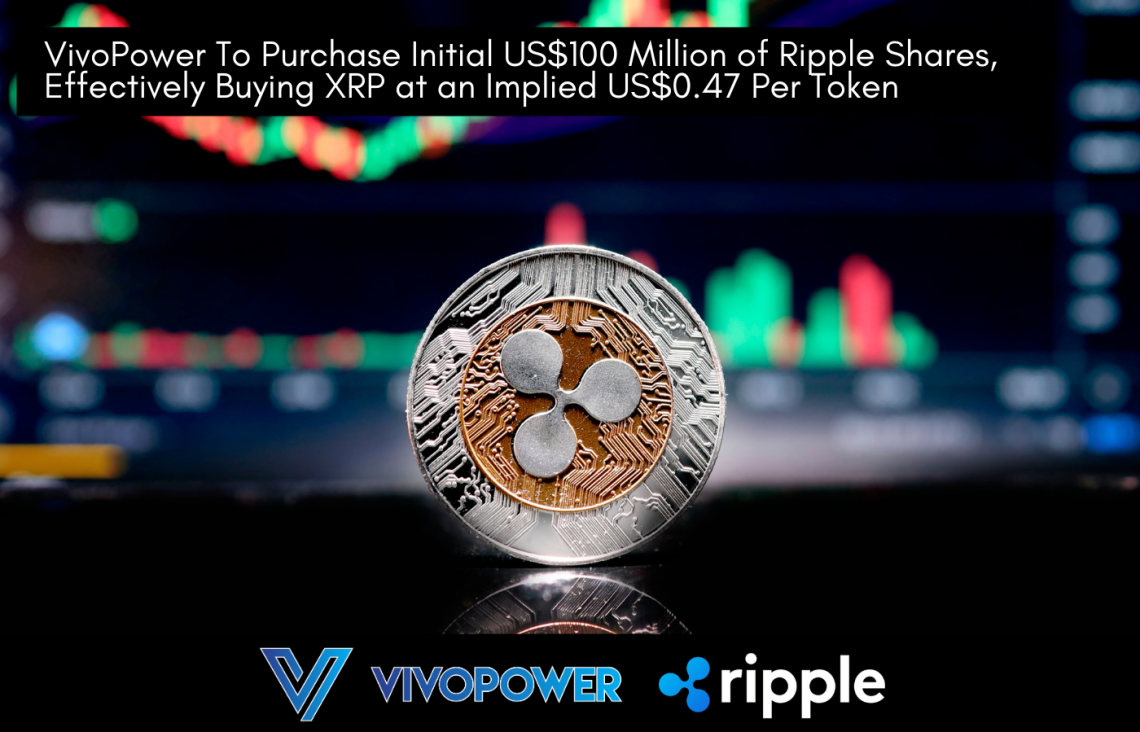
Backed by investors including Andreessen Horowitz and Google Ventures, Ripple Labs (Ripple) holds 41 billion XRP tokens, representing approximately 41% of all XRP tokens on issue
VivoPower will become the first and only U.S.-listed company to provide exposure to Ripple
For every $10 million of Ripple shares acquired, an estimated US$5.15 of value per share could accrete to VivoPower
VivoPower today announced it is acquiring Ripple Labs (Ripple) shares, as part of a strategic enhancement to its XRP-focused digital asset treasury strategy. Following a two-month period of due diligence, VivoPower has budgeted to purchase an initial US$100 million of privately held Ripple shares. This encompasses definitive agreements directly with current Ripple shareholders, which are subject to final approval from Ripple’s executive management. Aside from these transactions, VivoPower will continue to directly acquire and hold XRP tokens.
Ripple minted a fixed 100 billion of XRP tokens at inception and given there have been approximately 14 million XRP tokens burnt to date, the network is mildly deflationary. Ripple continues to hold 41 billion XRP tokens, primarily in escrow. In addition, Ripple has a number of operating businesses including RLUSD, its stablecoin; the digital assets prime broker Hidden Road; MetaCo and the Standard Custody and Trust Company, as well as the recently acquired stablecoin payment platform company, Rail.
VivoPower will become the first and only publicly listed company in the United States that provides shareholders with exposure to Ripple shares as well as XRP tokens. On a weighted average basis, this dual-pronged strategy is intended to deliver an acquisition cost per XRP token that represents an exceptionally favorable discount to the market price of XRP. For every US$10 million of Ripple shares acquired, an estimated US$5.15 per share of value accretion could accrue to VivoPower shareholders (this is based on factors including the current market prices of VVPR, XRP and weighted average purchase price of Ripple shares, all of which are subject to volatility and change).
Importantly, VivoPower will have a full and direct legal title of Ripple shares purchased, and be recorded as a shareholder directly on Ripple’s cap table. VivoPower will not purchase any Ripple shares that are held in special-purpose vehicle structures (with embedded fees and costs). An independent auditor will conduct quarterly reviews of VivoPower’s Ripple shareholdings.
Kevin Chin, Executive Chairman and CEO of VivoPower, commented: “The opportunity to acquire Ripple shares and materially average down the acquisition price per XRP is in line with our objective of building a sustainable long-term treasury model that translates into substantial potential upside for shareholders. Our portfolio construction strategy is to buy a combination of Ripple shares and XRP tokens. This will allow us to optimize for yield maximization while also minimizing the weighted average cost of XRP acquired.”
Adam Traidman, former Ripple board member and Chairman of VivoPower’s Advisory Board, commented: “By purchasing Ripple shares, not only will VivoPower acquire XRP at valuations up to an 86% discount versus buying XRP outright on the market, we will also gain a stake in Ripple’s RLUSD stablecoin and its other business units, including Hidden Road, Rail and Metaco.”
To support the execution and governance of its treasury strategy, VivoPower has engaged leading digital asset custodian and private market securities infrastructure providers, including BitGo and Nasdaq Private Market, LLC, the preferred partner of Ripple for transacting its shares. Securities-related services are offered through NPM Securities, LLC, a member of FINRA and SIPC. Nasdaq Private Market, LLC is operationally independent from Nasdaq Stock Market LLC.
To read the full press release, and to keep up with all of VivoPower’s releases, visit our Press Releases page.
Contact
Shareholder Enquiries
Aligning capital with conscience has always been fraught with friction: slow fund flows, opaque reporting, limited access, and costly intermediaries. But for impact investing companies—those seeking social and environmental returns alongside profit—the emergence of Decentralised Finance (DeFi) is flipping the script.
Instead of relying on banks, brokers, and bureaucratic middlemen, DeFi uses blockchain-based smart contracts to power borderless, automated financial services. It’s fast. It’s transparent. And for those of us working to scale meaningful change, it’s becoming indispensable.
DeFi is more than crypto hype. It’s a new financial infrastructure—peer-to-peer, programmable, and radically inclusive. Built on public blockchains like XRP Ledger, it replaces traditional gatekeepers with software that enforces rules and executes transactions 24/7.
With DeFi, anyone with internet access can:
Smart contracts—self-executing code—automate the process, slashing costs and opening doors for innovation. For impact investors, this means more capital deployed with less delay—and more accountability along the way.
At its core, impact investing is about funding good ideas that generate good outcomes—clean energy, affordable housing, access to education, and climate resilience. But until now, tracking those outcomes and moving money efficiently has been a challenge.
DeFi solves that. Here’s how:
Every transaction is recorded and visible—ensuring funds reach their intended purpose and results can be independently verified. Greenwashing? Not on our watch.
No wire transfers. No paperwork delays. Smart contracts release funds automatically when impact milestones are reached. That means more time building and less time waiting.
Global by design, DeFi allows investors anywhere—from billion-dollar foundations to retail contributors—to participate in fractional ownership of impact assets. The barriers are falling.
We’re now experimenting with tokenised impact—turning verified outcomes like solar energy output or reforested hectares into digital tokens. These tokens can be tracked, traded, and linked to performance-based funding.
Traditional impact investments are often illiquid, tying up capital for years. With DeFi, tokenised assets can be sold or reallocated in secondary markets—giving investors flexibility without compromising purpose.
Across sectors and continents, these models are already transforming the game:
What excites us most isn’t just the tech—it’s the alignment of DeFi’s architecture with impact investing’s values. The open-source, data-rich nature of blockchain creates fertile ground for integrity, scale, and equity.
We’re now exploring deeper integration with DeFi platforms to create high-velocity impact capital ecosystems. We’re experimenting with conditional grants, verifiable on-chain KPIs, and token-based impact portfolios.
Because this is more than a financial upgrade—it’s an ethical evolution. DeFi gives us tools to rethink not just where our money goes, but what it does—and who it empowers along the way.
Business-as-usual? That’s not our lane. We’re building for regeneration, resilience, and radical transparency. And in DeFi, we’ve found a powerful co-architect.
For more news and insights, stay tuned to the Arowana website.
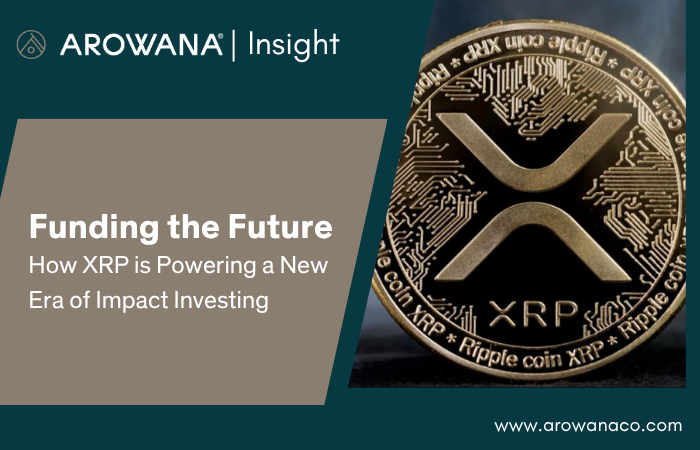 The movement toward transparent, efficient, and scalable capital for social good has found an unlikely ally in a digital asset once known primarily for cross-border remittances: XRP.
The movement toward transparent, efficient, and scalable capital for social good has found an unlikely ally in a digital asset once known primarily for cross-border remittances: XRP.
Built on the XRP Ledger (XRPL), XRP is rapidly gaining traction as a tool for impact investing, used by nonprofits, fintech startups, and blockchain innovators to fund projects that address critical social and environmental challenges.
From classroom grants and carbon credit tokenisation to developer ecosystems for ESG, XRP is quietly shaping the future of regenerative finance.
The appeal of XRP lies in its underlying architecture:
These properties make XRP ideal for mission-critical funding environments, particularly in emerging markets or disaster zones where speed and accountability are paramount.
Charitable organisations have begun accepting XRP for donations, thanks to its seamless transfer mechanics and global reach:
Ripple’s Ripple for Good initiative demonstrates how strategic philanthropy and blockchain tools can converge:
In a bid to support open-source projects focused on sustainability and inclusion, XRP community funds have seeded dozens of blockchain-based startups:
These grants help accelerate the development of decentralised tools for meaningful social outcomes.
One of the most promising use cases is the tokenisation of real-world outcomes:
For projects operating across borders—especially in underserved regions—XRP offers:
The convergence of XRP’s technical infrastructure with a growing ecosystem of socially driven developers and funders signals a new chapter in digital finance. Impact investing, once constrained by traditional systems and limited visibility, can now tap into blockchain's transparency, speed, and automation to scale faster and more credibly.
From microfinance in remote villages to carbon offset verification across borders, XRP is proving that digital assets can do more than transact—they can transform.
VivoPower recently announced its XRP treasury strategy that reflects the company's measured approach to integrating digital assets into its broader sustainability efforts.
By allocating $121 million to XRP, VivoPower seeks to participate in the evolving XRP Ledger ecosystem while exploring its potential as a tool for funding impact-focused initiatives. This aligns with a growing interest in using blockchain-based assets to support projects that balance financial viability with long-term social and environmental value.
For more news and insights, stay tuned to the Arowana website.
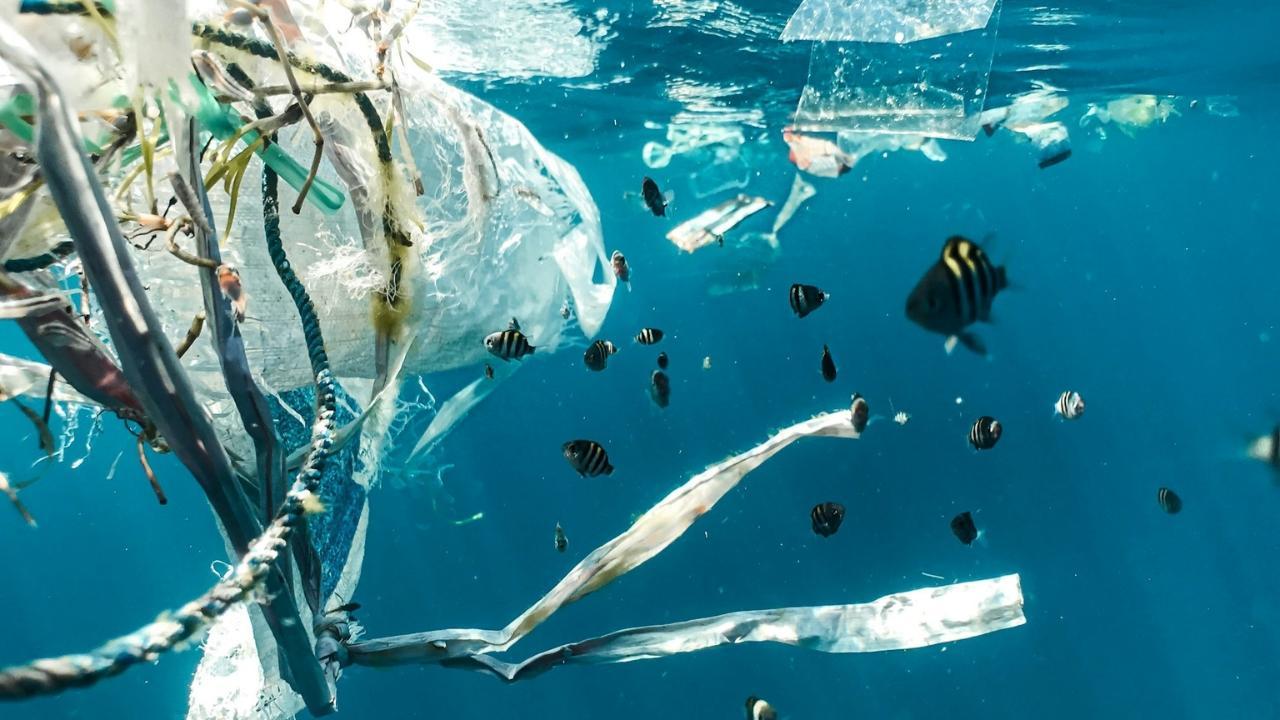
What began as a modest council-led initiative in Western Australia has evolved into a global movement with serious economic and reputational consequences. Plastic Free July, first launched in 2011 by Rebecca Prince-Ruiz and a handful of colleagues at the Western Metropolitan Regional Council, now mobilises over 190 countries and tens of millions of participants each year. For businesses, what was once seen as a well-meaning eco-challenge has matured into a proving ground for operational reform, consumer alignment, and long-term brand resilience.
At its heart, the campaign seeks to reduce the world’s dependence on single-use plastics — a goal that, on the face of it, may appear modest. But behind the substitution of coffee cups and cutlery lies a deeper proposition: that modern enterprise must be redesigned with sustainability as a core operating principle, not an afterthought.
The real impact of Plastic Free July lies in how it invites companies to confront a simple but uncomfortable question: how deeply embedded is plastic in our business model?
The campaign offers a blueprint for change — one that spans supply chains, procurement, workplace culture, and customer engagement. Unlike fleeting CSR campaigns of yesteryear, the momentum generated in July is often sustained long beyond the calendar turn.
The appeal of Plastic Free July is in part its clarity: reduce plastic use, and reduce it visibly. The objectives are tangible. Cut down emissions from plastic production and disposal. Shield marine ecosystems from the byproducts of convenience. Reassure consumers increasingly wary of greenwashing. And align with a regulatory environment that is steadily tightening its grip on wasteful packaging.
For businesses, meaningful engagement starts with a candid appraisal of current practices. Waste audits, the unglamorous starting point of most success stories, help identify hotspots of plastic dependence, whether in logistics, foodservice, retail, or back-office operations.
From there, the interventions vary in ambition and scale. Some firms replace disposable items with compostable alternatives. Others go further, restructuring procurement policies, switching suppliers, or introducing refill systems. Financial incentives, competitions, and branded giveaways help nudge employee habits, while messaging across internal and external platforms reinforces the narrative.
In this regard, Plastic Free July operates as a cultural intervention. It creates an internal moment, a licence even, for teams to question the status quo, trial new approaches, and reframe what’s considered “normal”.
The data from 2024 is compelling. Plastic Free July attracted 174 million participants worldwide, including thousands of businesses. An estimated 12 million tonnes of waste were avoided – of which 1.7 million tonnes were plastic. Businesses alone are thought to have cut around 390 million kilograms of plastic use during the campaign.
But the effects aren’t solely material. Organisations reported secondary benefits: greater employee engagement, deeper supplier partnerships, and more coherent sustainability messaging. And these benefits often cascade: a more engaged team tends to innovate more readily; better supplier dialogue can unlock further efficiencies and product differentiation.
Importantly, early adopters position themselves ahead of looming regulation. With jurisdictions from the EU to Southeast Asia introducing bans and penalties on single-use plastics, Plastic Free July offers a form of soft compliance – a way of getting the house in order before the auditors come knocking.
Necessity, as the old adage goes, is the mother of invention. And Plastic Free July has become a kind of annual showcase for what’s possible when design, science, and intent collide.
These examples are not marginal curiosities. They are early glimpses of how materials science and systems redesign might rewrite packaging norms in the coming decade.
One of the most persistent criticisms levelled at corporate sustainability campaigns is their ephemerality. A new product launch, a green-washed social media post, a press release touting reduced emissions – and then business as usual.
Plastic Free July, by contrast, has a surprisingly robust track record when it comes to lasting change. Research indicates that 87% of participants make at least one enduring shift in behaviour post-campaign. In business settings, that has translated into:
Take El Nido Resorts in the Philippines. Their post-campaign commitment to eliminating single-use plastics wasn’t limited to hospitality areas. It extended across housekeeping, transport, and supplier relations. Elsewhere, manufacturing firms have phased out plastic-based protective shipping materials in favour of biodegradable corn-starch foam.
For large organisations, these changes offer both reputational dividends and operational efficiencies. For smaller firms, they can open up new customer segments and supplier relationships.
With the growth of stakeholder capitalism, in which performance is judged as much by ESG ratings as by EBITDA margins, campaigns like Plastic Free July hold a peculiar power. They offer a shared cultural reference point – a window during which companies can test interventions, align teams, and communicate commitments.
But there’s also a degree of soft pressure at play. A visible absence from the campaign, especially among brands in retail, hospitality, or consumer goods, can raise eyebrows. Conversely, proactive participation is increasingly seen as a marker of foresight and integrity.
Ultimately, the plastic crisis is not going to be solved in a single month. Nor by a single campaign. But movements like Plastic Free July are helping to shift the cultural substrate on which business operates. They challenge the long-held notion that convenience must trump conscience, or that sustainability is always more expensive.
For many firms, July is a line in the sand. What follows – the audits, trials, new supplier relations, consumer communication strategies – is not merely follow-through. It is the new baseline.
The message is not simply to do less harm. It is to design better. And in doing so, to claim a place in a more circular, less wasteful economic future.
As with many transformations, the journey begins with small steps. But in a marketplace increasingly shaped by planetary limits and consumer expectations, the companies that walk the talk may find themselves not just compliant but competitive.
For more news and insights, stay tuned to the Arowana website.
Suneet Wadhwa, ex Ripple Head of Investments, joins Board of Advisors
David Mansfield, ex VinFast CFO, has joined as group CFO
Keith Loose, ex Block.one blockchain and tech infrastructure leader, has joined as group CTO
VivoPower is pleased to announce key executive leadership appointments, namely David Mansfield as Chief Financial Officer and Keith Loose as Chief Technology Officer. In addition, Suneet Wadhwa, former Head of Investments at Ripple, has joined the Board of Advisors.
David Mansfield brings over 25 years of senior financial leadership experience across global capital markets, financial technology, and sustainable enterprises. He most recently served as Chief Financial Officer (CFO) of VinFast, a global electric vehicle manufacturer where he was a key member of the executive team that led it to a successful US$23 billion initial public offering (IPO) on NASDAQ. Prior to then, Mr. Mansfield held senior roles including as managing director at J.P. Morgan, Credit Suisse, and Goldman Sachs, leading complex capital markets, trading, and structuring functions. He also brings entrepreneurial experience from founding and advising fintech ventures across Asia. Mr. Mansfield will lead VivoPower’s financial strategy, capital allocation, statutory reporting and investor engagement functions.
Keith Loose joins as Chief Technology Officer with over 20 years of experience at the intersection of enterprise technology, blockchain, and infrastructure architecture. He has held senior technology leadership positions at companies including Block Inc (CashApp Financial Platforms), Block.one, OSL Group, CLSA, and J.P. Morgan, with a strong focus on security, performance engineering, and financial platform development. At VivoPower, Mr. Loose will oversee the Company’s digital transformation, cybersecurity, and the buildout of its digital asset treasury infrastructure.
Suneet Wadhwa is a serial tech entrepreneur and executive with a distinguished 30-year career in Silicon Valley. He brings specific experience in the digital asset and decentralized finance industry and his role at VivoPower will be to build out the company’s DeFi strategy to generate yield on its XRP treasury and to spearhead DeFi investments in the XRPL ecosystem. At Ripple, Mr. Wadhwa led a US$500 million institutional investment portfolio, delivering a 4.2x MOIC and 77% IRR across 38 global investments. His track record includes successful exits such as BRD (acquired by Coinbase) and strategic positions in Forte, Flare, Kava, BitPay, and Mintable. His expertise will directly support VivoPower’s XRP treasury strategy and real-world integration across the XRP Ledger (XRPL). Prior to his role at Ripple, Mr. Wadhwa co-founded Snapfish, which was acquired by HP for US$300 million and was an early employee at Home Network where he was integral to the company’s growth through to their US$35 billion IPO.
Kevin Chin, Executive Chairman and CEO of VivoPower, said: “We are delighted to welcome David, Keith and Suneet to the VivoPower team. Each of them is highly experienced and credentialed in their respective fields, bringing exceptional track records in capital markets, digital asset, decentralized finance and blockchain technology to VivoPower. We have already been working closely with each of them as we execute on a number of significant strategic initiatives across VivoPower.”
To read the full press release, and to keep up with all of VivoPower’s releases, visit the company's Press Releases page.
Contact
Shareholder Enquiries
Marks first major execution of VivoPower's new corporate strategy and significant validation of the XRP ecosystem's utility for institutional treasury management
VivoPower is building a virtuous cycle—generating yield and using it to systematically increase its core XRP position, creating a perpetually compounding engine for shareholder value
VivoPower’s strategic transformation to an XRP-centric treasury is supported by a consortium of global shareholders, including His Royal Highness Prince Abdulaziz bin Turki bin Talal Al Saud of Saudi Arabia, reflecting a deep conviction in the long-term institutional role of the XRP asset
Flare Network is a $1.9bn coin market cap enterprise backed by Ripple Labs
VivoPower, a publicly traded company focused on an XRP-centric treasury strategy, today announced the launch of a definitive partnership with Flare to generate yield on its digital assets. The agreement initiates the deployment of VivoPower’s XRP holdings through a scalable framework, beginning with a benchmarked initial phase of US$100 million. This marks the first major execution of VivoPower's new corporate strategy and a significant validation of the XRP ecosystem's utility for institutional treasury management.
This definitive agreement marks a pivotal moment for institutional adoption within the rapidly expanding Flare ecosystem. The network has already demonstrated significant traction in the retail sector through partners like Uphold, a global digital asset platform serving over 10 million users with approximately US$7 billion in assets under reserve. VivoPower’s commitment now represents the crucial institutional validation of the ecosystem, establishing the first major treasury management use case on the network.
This partnership delivers the first institutional-scale validation of Flare’s FAssets system, establishing it as the essential programmable utility layer for the XRP ecosystem. The strategy is designed to be regenerative: VivoPower will generate yield via protocols on Flare, such as Firelight, and reinvest that income directly back into its core XRP holdings, creating a perpetually compounding and capital-efficient treasury.
Kevin Chin, Executive Chairman and CEO of VivoPower, said: “It’s no longer enough to simply hold XRP; the duty to our shareholders is to make it productive. This landmark partnership with Flare does precisely that—it puts our treasury to work. We are building a virtuous cycle: generating yield and using it to systematically increase our core XRP position, creating a perpetually compounding engine for shareholder value. Adopting Ripple’s RLUSD is a cornerstone of this strategy, providing the stability and compliance this next-generation treasury demands."
Hugo Philion, Co-Founder of Flare, said: “While the XRP Ledger (XRPL) is the proven standard for settlement, a new layer of utility is required to unlock the full potential of digital assets. We engineered Flare as the blockchain for data to be that layer, with enshrined protocols to securely access information from other chains and the real world.
“Our FAssets system is a direct application of that core technology. It is more than just a bridge; it’s a gateway that allows institutions to bring assets like XRP into programmable DeFi environments to generate yield, all while retaining their fundamental security. What VivoPower is pioneering today is an open invitation for all institutions to build on this new utility layer.”
XRPFi: The Standard for Institutional-Grade Digital Finance
This partnership pioneers the XRPFi standard—a necessary evolution of DeFi engineered specifically for the demands of institutional treasury management. This model is defined by its focus on three core principles: sustainably generated yield, unwavering regulatory clarity, and asset-backed security.
Such a standard can only be built upon the unique strengths of the XRP asset and the proven history of its underlying ledger. For over a decade, the XRPL, launched by Ripple in 2012, has been tested and trusted as the backbone for enterprise-grade finance, making it the only logical foundation for the next generation of tokenized, real-world assets.
VivoPower’s selection of XRP as its core reserve asset was a strategic decision, predicated on its unique standing in the market. Among digital assets, XRP offers a level of regulatory clarity and proven efficiency that is essential for a public company’s treasury. This established track record, combined with its architecture’s suitability for tokenized real-world assets (RWAs), makes it the clear choice for a forward-looking financial strategy. To cement this ecosystem-first approach, VivoPower will hold Ripple’s forthcoming RLUSD stablecoin as its primary cash-equivalent reserve, ensuring stability and compliance across its entire digital treasury.
Flare: The Institutional-Grade Bridge for XRP Utility
VivoPower’s selection of Flare was the result of a rigorous evaluation of its technology, which serves as a secure, institutional-grade bridge for XRP to the DeFi ecosystem. Central to this is Flare’s FAssets system, a non-custodial protocol that enables XRP to be used in smart contract applications while preserving its native security model.
Flare’s broader ecosystem demonstrates significant readiness for institutional activity. Protocols essential to this strategy, such as the yield-generating Firelight protocol, are in place. The network’s ability to attract substantial liquidity has been recently demonstrated by the launch of the USDT0 stablecoin, which drove over US$90 million in new Total Value Locked (TVL). This robust infrastructure validates Flare’s role not as a replacement for the XRPL but as a complementary, programmable utility layer built to extend XRP’s reach into compliant, yield-generating finance.
Backed by Global Financial Leaders and XRP Ecosystem Veterans
VivoPower’s strategic transformation to an XRP-centric treasury is supported by a consortium of global shareholders, including His Royal Highness Prince Abdulaziz bin Turki bin Talal Al Saud of Saudi Arabia. This backing reflects a deep conviction in the long-term institutional role of the XRP asset.
Operationally, the strategy is guided by former senior leadership from Ripple in Asia, providing unparalleled ecosystem expertise. VivoPower will scale its engagement with Flare through targeted institutional partnerships and ecosystem activation programs.
This convergence of visionary strategy, significant financial backing, and deep industry expertise marks a new phase of maturity for the XRP ecosystem—one defined by product-market fit, compliant yield, and sustainable infrastructure.
To read the full press release, and to keep up with all of VivoPower’s releases, visit the company's Press Releases page.
About Flare
Flare is a next-generation Layer 1 blockchain designed to connect decentralized systems with real-world utility through secure, data-rich interoperability. With enshrined data protocols, trust-minimized interoperability, and support for complex computation, Flare is the only EVM-compatible Layer 1 optimized for chain-agnostic applications. Its innovative FAssets system brings non-smart contract assets like XRP into DeFi, enabling institutional-grade staking and yield generation. Following strong adoption on its Songbird canary network and with mainnet launch approaching, Flare is positioned as the foundational utility layer for institutional blockchain adoption worldwide.
Contact
Head of Marketing, Ami Tsang
Shareholders as at the ex-dividend date of 12 June 2025 will be eligible to receive any potential special dividend distributions relating to Tembo transactions
Corresponding record date will be 13 June 2025
VivoPower today announced that it has set an ex-dividend date of 12 June 2025 pertaining to any potential future dividend distributions regarding transactions involving Tembo e LV B.V. (Tembo).
Shareholders who hold VivoPower shares as of the close of business on 12 June 2025 will be entitled to receive any potential future special dividend distributions relating to Tembo. Shareholders purchasing VivoPower shares on or after the ex-dividend date will not be eligible for the distribution.
Any potential future special dividend distributions relating to the Caret business unit will be advised separately.
Further details regarding potential special dividend distributions, including the amount and ratio will be provided when appropriate. There is no guarantee that any special dividend distributions will be made.
To read the full press release, and to keep up with all of VivoPower’s releases, visit the company's Press Releases page.
Contact
Shareholder Enquiries